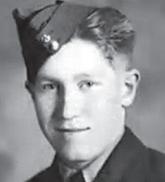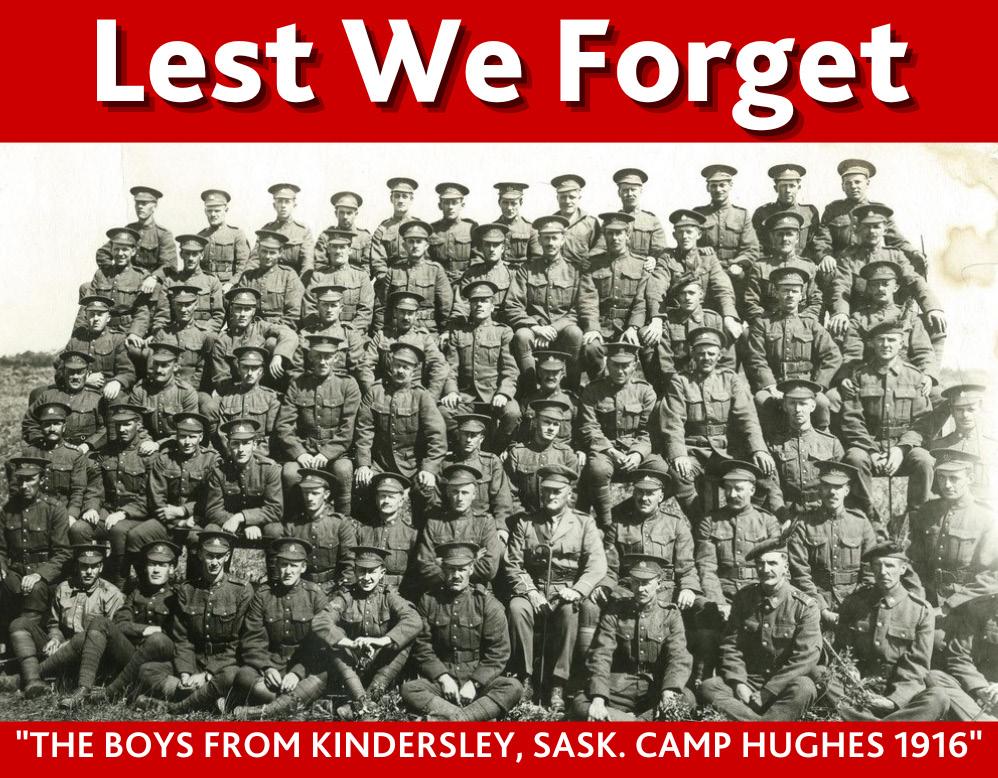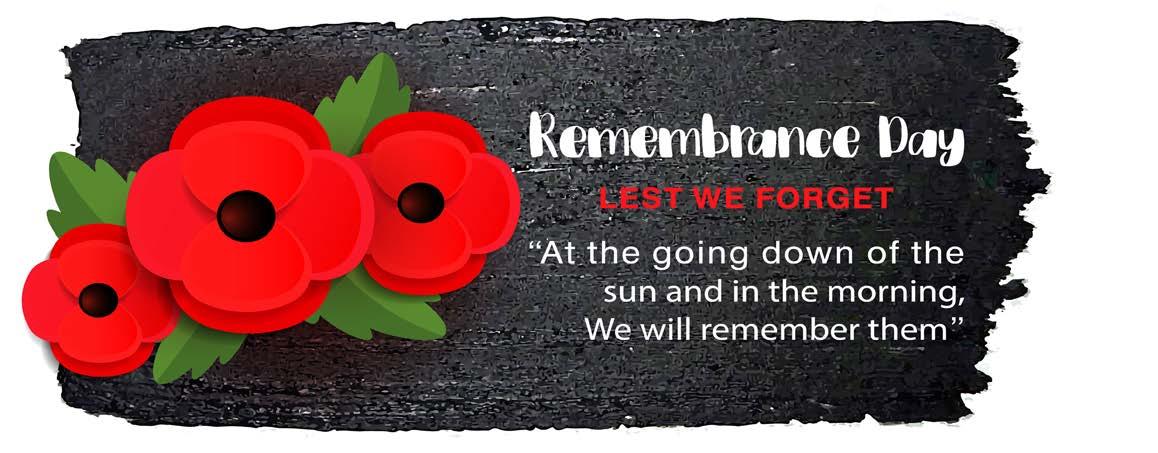

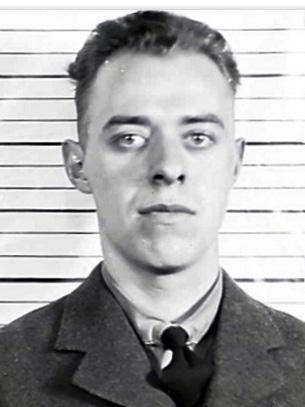
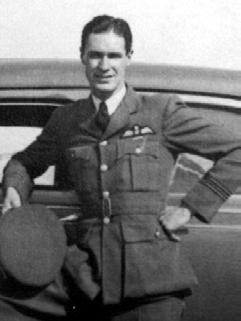












































































































































NOVEMBER 11th,


































































































































































































































































NOVEMBER 11th,


















































































































We salute those who fought for our freedom so we may live in peace. This special edition is dedicated to the men and women from our region that so bravely served our country. Some of them paid the supreme sacrifice. They were more than soldiers, they were sons and daughters, husbands and fathers. They came from towns and hamlets that are no longer. We can never begin to repay them, but we can remember them, every ONE of them.
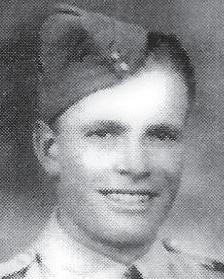
Among the names honoured this Remembrance Day is that of Gunner Cecil Duffin Bourne, a Kindersley man who gave his life during the liberation of Holland in the final year of the Second World War.
Bourne was born April 5, 1919, at Eston, Sask., and grew up in Kindersley, where he completed his schooling. Before enlisting, he worked as a machinist’s helper with the Canadian National Railroad.
He joined the Canadian Army at Rosetown on June 25, 1941, and went overseas later that year. After training in Scotland and England with the 7th Light Anti-Aircraft Regiment attached to the 67th Light Anti-Aircraft Battery, he landed in France in July 1944.
Bourne went on to serve with the Royal Canadian Artillery, attached to the 2nd Anti-Tank Regiment (18th Battery). On Oct. 13, 1944, during an attack by German forces near the village of Hoogerheide, Holland, Gunner Bourne was killed in action. He was 25.
He is commemorated at the Bergen-op-Zoom Canadian War Cemetery in Noord-Brabant, Netherlands.
The son of Reginald Stafford and Celia Pearl Bourne of Kindersley, he was also the brother of William Richard, Inez Alice, Phyllis Margaret and Vera Audrey Bourne.
For his service, Gunner Bourne was posthumously awarded the 1939–1945 Star, the France and Germany Star, the Defence Medal, the War Medal, and the Canadian Volunteer Service Medal with Clasp.
As Kindersley gathers to honour its fallen this Remembrance Day, Gunner Bourne’s name stands among those remembered for courage and sacrifice in the cause of freedom.


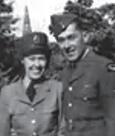

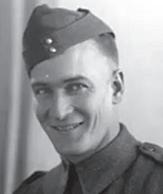
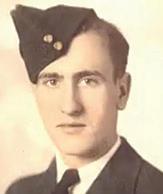


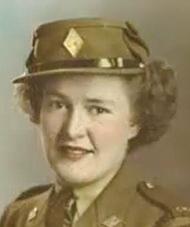

For the first time in the history of Kindersley has she ever witnessed such a scene as took place here on Monday when the volunteers boarded the east bound train enroute to take their stand in the rank and file of loyal Canadians who are going to aid the British Empire in the world war, which has set all Europe ablaze and wrapped it up in the bloodiest battle of all time.
Kindersley has shown that she is loyal to the core by the number of men who volunteered to take up arms in defense of the British Empire - the greatest, the world has ever known, and if needs be to die upon, the battlefield under the colors that never fade. The call to arms soon told that Kindersley had men who were fit, able and willing to shed their young blood for god, country and king against the most tyrannical combination which seeks to overthrow the nations that have endeavored to keep the peace of the world and eventually reign supreme on land and sea.


Early Monday morning people were congregating on the streets anxiously waiting an opportunity to have a few parting words with the men about to leave. Nearing train time the population was practically all upon the street and the volunteers were kept quite busy shaking hands and saying good-bye. A number of the citizens with automobiles took the boys for a swift spin around the town and then fell in behind the L.O.L. Band and proceeded to the depot where the boys lined up and answered the roll call. The band then played a few lively airs, which helped to enliven the spirits of those whom the parting would be most trying.
Speeches that were appropriate and helped to stir the blood of the ancestors in our veins, were delivered by Revs. Leitch, Watson and Murchison, Lieut. H. Arnold of the 29th, Staff Sgt .. Lett of the Royal North West Mounted Police, Volunteer Batchelor and Deputy Mayor W. Phillips. After all the ceremonies were dispensed with,
the crowd patiently waited the last farewell when the boys were leaving on the train, but not yet, a few more hours in Kindersley was given to the boys through the train jumping the track about three miles west of town and holding it up for three hours later than schedule time. With this news it was thought a banquet could be given our boys about to depart, and a collection amounting to a fairly large sum was collected for the purpose. After thought however, proved more appropriate at such a late hour and that the dividing of the spoils with the men about to take up arms for the Empire’s cause.
Kindersley Loyal Orange Lodge loses two energetic members with the departing of the volunteers: Bros. Aggett and McMillan, while three other Orangemen are in the contingent, but not members of the local lodge. These brethren will in all probability become Honorary Members of the Association.
- Kindersley Clarion, Oct. 1914
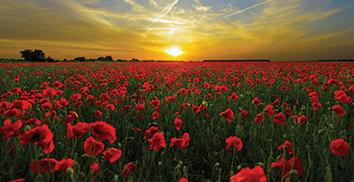
















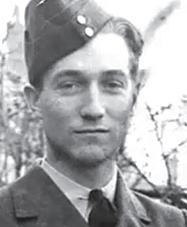




















































Kindersley, Saskatchewan
Died: May 2, 1916
Commemorated at Lijssenthoek Military Cemetery, Belgium












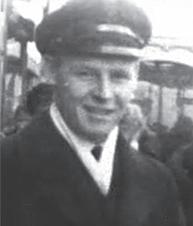
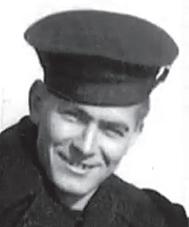

Canada officially entered the war against Nazi Germany on Sunday, when the Government gave effect to the almost-unanimous will of Parliament.
For the first time in history, the Dominion of the British Commonwealth, on its own account, by its own will, exercised the prerogative of nationhood by declaring a state of war. In 1914, the Government merely published the British war proclamation.
Just 13 hours after the House of Commons signified its approval of the Government’s proposal to throw Canadian men and resources into war for the second time in 25 years, a royal proclamation was issued by Lord Tweedsmuir, Governor General, on authority of King George VI, announcing a state of war with Germany exists as and from Sunday.
Prime Minister MacKenzie King, speaking in the House of commons, repeated his assertion of last March that the Government does not believe conscription necessary in Canada and “no such measures will be introduced by the present administration.”
Rt. hon. Ernest Lapoints, minister of justice, speaking for himself and all the Quebec ministers in the Cabinet, told the House of commons Saturday they would support whole-heartedly the Government’s war policy and their support would cease only if the Government proposed conscription for overseas service.
- Kindersley Clarion, September 14, 1939











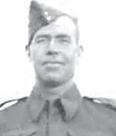






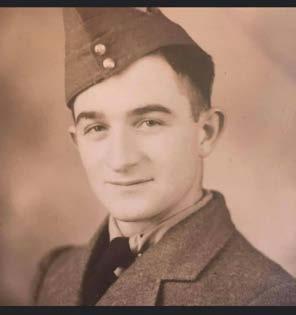









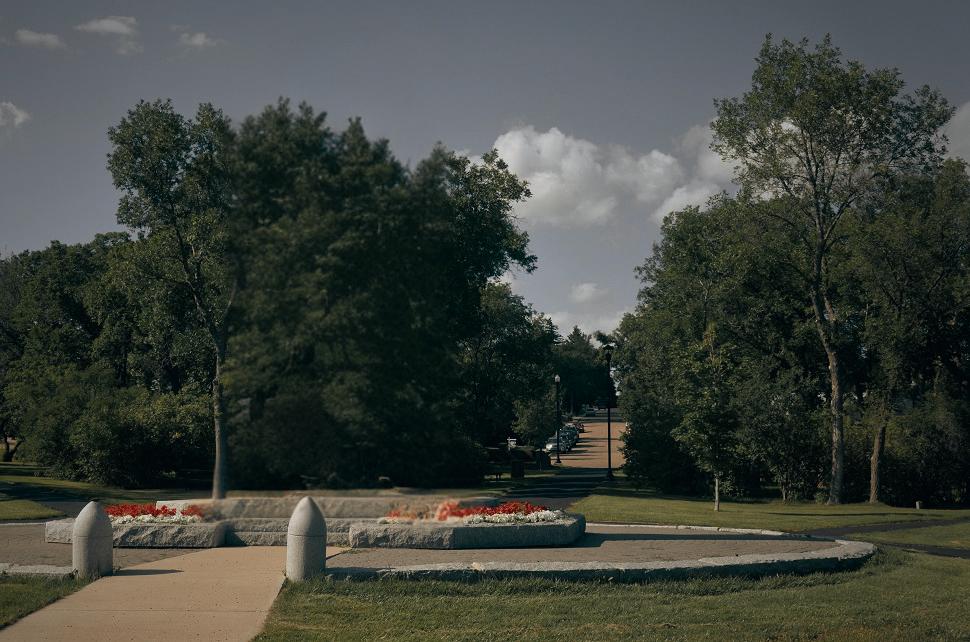














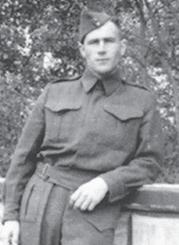
Rifleman Floyd Allan Appleby Army Pinkham, Saskatchewan
Died: February 16, 1945
Commemorated at Groesbeek Canadian War Cemetery, Holland



















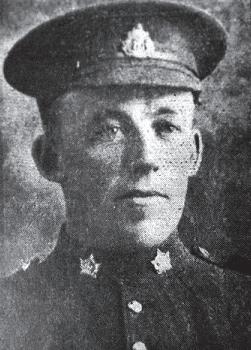
Private Frederick Harman Benson Army Kindersley, Saskatchewan
Died: September 2, 1918
Commemorated at St. Catharines (Victoria Lawn) Cemetery; Ontario, Canada










Pilot Officer Donald James Campbell
Royal Canadian Air Force Brock, Saskatchewan
Died: February 16, 1945
Commemorated at Reichswald Forest War Cemetery, Germany

















By June Nargang
Maurice Cook was born to Albert and Emily (Jordan) Cook on May 30, 1903, the fifteenth child of 18, weighing 15 pounds, in Ham Surrey House maternity ward, home of workers of the Palace.
He could play music at an early age: the mouth organ, jew’s harp, and bird whistling. He received three years of formal education and sang in the Westminster Abbey boys’ choir from the ages of eight to ten.
The family came to Canada with his parents and seven children, landing at the port of Montreal. They came to Manitoba and started “Market Gardens” in 1913. It was all hands on deck!
At 18, he worked for an older brother’s sawmill near Nipawin, Sask., and answered an ad for a hired man near Rosetown. There he learned to manage an eight-horse hitch for seeding, a binder to make bundles, and a feed threshing machine.
In 1927, he married the farmer’s oldest daughter, Eleanor Simpson. He worked with two brothers putting in water
and sewer lines in the town of Wilkie as a summer job before returning for harvest.
After he was done, he and Eleanor and their new baby boy, along with his brothers, headed for homesteading in the Peace River Country of Alberta. They settled in the community of Goodfare.
Along with brothers and a couple of friends, they cleared land for a store, community hall, school, and four homes, including their own one mile east of the store. These were all log buildings from cleared trees.
Hard work was well known to our parents and all neighbours from foreign countries: Germany, France, Sweden, Norway, England, Scotland and Native Albertans. Three reserves were nearby.
Our family included two boys and four girls. Their son Billy is buried at Hythe. Irene was born in Beaverlodge, and Dad delivered the last four of us. The midwife appeared a little late for Harold, Margaret, Joyce and June.
We had wonderful neighbours and friends, but in 1941



one of Dad’s brothers came in an army uniform, convinced life could be more profitable than scratching out a hard life there. In October, an auction sale was held and we rode the train for days to Biggar, Sask. Grandpa had invited his daughter and five children to come home and be cared for by him. It truly was our mother’s home — a large two-storey framed T. Eaton house. It was a castle for us! We attended the same Camberly School she had attended.
Dad trained in Wainwright, then Red Deer, and from there to England. He came home in 1945, and what a wonderful reunion for all of us!
While there, he got to visit three older siblings and their families, and helped clean up in London, driving a “lorry” and putting body parts in bags, alongside Princess Elizabeth (the future Queen) who was driving an ambulance. He was gifted a cup and saucer and bread-and-butter plate from King George VI on behalf of Ham Surrey House.
Dad hired out near Rosetown for money to buy his own farm six miles east and south of Kindersley in 1948. Our new place was Turvin School for us three girls. Harold was a gas truck driver at Co-op, and Irene worked at McEwen’s Dry Goods and as a postal worker.
Dad belonged to Co-op, Credit Union, Pool and was a Legion member, Branch No. 57, from 1948 to 1965. Many farmers also called on him as a midwife for their livestock.
He also worked for R.M. No. 290 building roads and cutting grass in ditches to pay back the loan for a veteran who had bought land. There was no help for mental attacks and night sweats, causing great anxiety for him — always afraid of


hurting our mother. Still, there is not much real help for veterans of other wars since, either.
He was a great reader of agricultural materials. He was very community-minded, helping to shingle four of our neighbours’ houses built in 1950 and roofing the rink. It took many volunteers to build it.
In 1964, he suffered a massive heart attack and was hospitalized for months. When he fully recovered, Mother drove them to Victoria to celebrate their 39th anniversary with her siblings in February.
He had another massive heart attack in March and had surgery in Vancouver General. Complications set in and he passed peacefully with Mother and her sister Annie at his bedside on March 26, 1966.
His interment was in the Edna Rose Cemetery in Kingstand community north of Rosetown, along with Grandpa and Grandma Simpson. Our mother, sister Irene and brother Harold are all resting together. He served his country well, along with much love for his family.



































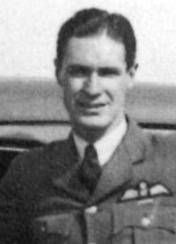
Flight Lieutenant Keith Fergus Arnold
Royal Canadian Air Force
Kindersley, Saskatchewan
Died: July 25, 1941
Commemorated at St. Eval Churchyard, England
Keith Fergus Arnold, born in April 1911 at Kindersley, Saskatchewan, attended Wilson and City Park schools in Kindersley before completing his education at the University of Saskatchewan. Following enlistment as a CAN/RAF pilot, Arnold first served with the Royal Air Force attached to No. 217 Squadron (Woe to the Unwary) as a Flight Lieutenant (Pilot) during the Second World War. Arnold went on to serve with the Royal Air Force attached to the No. 1 Overseas Aircraft Delivery Flight delivering new aircraft from the Lockheed factory in California to Royal Air Force locations in England. On July 24, 1942, Flight Lieutenant (Pilot) Keith Fergus Arnold died after poor weather caused his Hudson aircraft to crash at Mull of Kintyre, Scotland following a delivery flight from California to RAF St. Eval, Cornwall, England. Arnold is commemorated at St. Eval Churchyard, Cornwall, England and on the RAF Memorial, London, England. Son of Colonel Henry “Harry” Watson Arnold and Eva Mary (nee Martin) Arnold of Saskatoon, Saskatchewan; brother of Pilot Officer Victor Charles Arnold (RCAF, died May 1941), Doris Eva, Freda Mary and Joan Elain; husband of Mary (nee Hudson) of Middlesex, England; father of Wayne McLeod Arnold; he was 30 years old.



















Sir Herbert Strutt Brock, SK








Walter Wandler’s life was marked by service, resilience and deep ties to his community.
Born Dec. 9, 1916, in Macklin, Sask., Wandler enlisted with the Canadian Army Infantry Corps in Regina on Dec. 16, 1942. His military training took him across British Columbia, Alberta, Saskatchewan and England before he was deployed overseas.
During active duty, Wandler served in Africa, Italy, Belgium, Holland and Germany. Like many veterans, he rarely spoke about his wartime experiences, leaving much of his story to be discovered through the letters he sent home — letters his family still cherishes today, though they remain difficult to read.
He was injured during his service and later hospitalized before return-
ing to Canada aboard the ship Lady Nelson.
For his service, Wandler received several honours, including the 1939–45 Star, the Italy Star, the France and Germany Star, and the Canadian Volunteer Service Medal with Clasp.
After returning home, Wandler worked in the mines in Alaska before resettling in Saskatchewan to farm in the Ermine area. He later purchased the family farm, located about 8.5 miles southeast of Kerrobert.
Wandler married Phyllis Doll, and together they raised six children on the farm. A devoted sports fan, he loved baseball and hockey and even spent a few years coaching.
Walter Wandler passed away on Oct. 24, 1997, leaving behind a legacy of courage, family and community spirit.

Served in the Royal Canadian Air Force from 1940-1945 as Leading Aircraftsman with the 411 Squadron. In 2015, Herb was awarded the Legion D’Honneur by the French Government who knighted him in honour of his service on D-Day and the Battle of Normandy.
Private Norman Mackenzie Army
Salvador, Saskatchewan Died: Apr 28,1917
Commemorated at Vimy Memorial, France
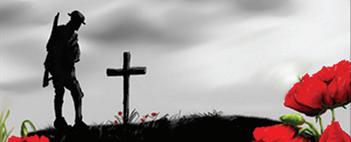

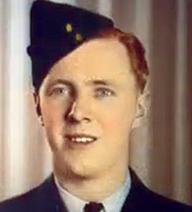


Zahais (Cy) Ternes
Zahais (Cy) Ternes was born June 1st, 1922 near Lemsford, Sask. In 1926, he along with his family, moved to a farm north of Smiley, in the RM of Prairiedale. He enlisted in the army on Jan. 16th, 1943 serving with the King’s Own Rifles. He spent time training at Port Alberni, Comox, Wainwright & Prince Albert. On March 28th, 1945 he disembarked for active duty in continental Europe serving with the South Saskatchewan Regiment in the Netherlands and Belgium. He was discharged from the army Jan. 29th, 1946. He, along with his wife Dorothy, were able to purchase farm land from the VLA ( Veteran’s Land Act) a few miles from his parents home.


“The soldier above all others prays for peace, for it is the soldier who must suffer and bear the deepest wounds and scars of war.” – Douglas MacArthur


































Three brothers from Smiley, Sask., served their country with the Royal Canadian Air Force during the Second World War.
Harlan Olaf Lea was born June 29, 1918, in Minnesota, and moved with his parents to Smiley as a young boy. After attending the University of Saskatchewan for a year, he enlisted with the RCAF and served in England for three years as a radar mechanic. He died June 24, 2009.
His brother, Merrell Arden Lea, was born July 8, 1921, in Minnesota. Like Harlan, he came to Smiley with his family as a child and joined the RCAF,


serving in various parts of Canada. He was en route to the Pacific when Japan’s surrender ended the war. A member of the Royal Canadian Legion branch in Stoney Creek, Ont., he died Aug. 1, 1981.
Their younger brother, Eugene Norman Lea, was born Sept. 13, 1923, also in Minnesota, and raised in Smiley. He served overseas with the RCAF in England, Holland and Belgium, and later became a member of the Kindersley Legion. He died April 12, 1991.
This Remembrance Day, their service and sacrifice continue to be remembered by the community and their family.



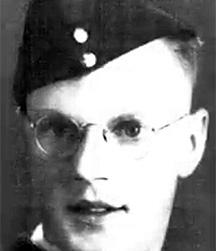
“O for the touch of a vanished hand, and the sound of a voice that is still.” - Alfred Lord Tennyson









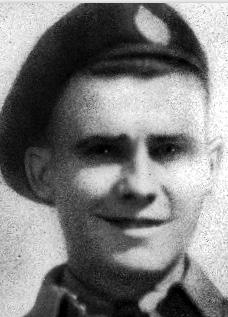
Private Edward Max Ellefson Army
Fairmount, Saskatchewan
Died: February 26, 1945
Commemorated at Groesbeek Canadian War Cemetery, Holland
Edward Max Ellefson, born November 8, 1923 at Kindersley, Saskatchewan, attended Prince Edward School in nearby Fairmount where he completed his education in 1940. Single and a farm labourer, Ellefson lived at Fairmount and worked in the district for the Millie Reed Farm at Netherhill, Saskatchewan before enlisting at Regina, Saskatchewan June 7, 1943. Ellefson served with the Royal Canadian Infantry Corps attached to the 1st Battalion, The Black Watch (Royal Highland Regiment) of Canada (Nemo Me Impune Lacessit) as a Private during the Second World War. Part of the 5th Infantry Brigade, 2nd Canadian Infantry Division, the regiment fought at Hoogerheide during the Battle of the Scheldt in October 1944, later moving into the Reichswald Forest in early February 1945 during Operation Veritable. On February 26, 1945, Private Edward Max Ellefson died near Louisendorf, Germany following the breach of the Siegfried Line and capture of German fortifications along the west bank of the Rhine River. He is commemorated at the Groesbeek Canadian War Cemetery, Netherlands and on the Columbaria at Eatonia, Saskatchewan. Only son of Edwin and Christina Louise Ellefson of Fairmount, Saskatchewan; brother of Evelyn Anne Ellefson; he was 21 years old.
Private Earl Conrad Swalm of Kindersley was among the many young Canadians who answered the call to serve during the Second World War.
Born Jan. 29, 1920, in Kindersley, Swalm completed his education at Merrington High School in 1937 before working on the family farm. He was summoned to military service under the 1940 National Resources Mobilization Act and enlisted at the 120 Canadian Army (Basic) Training Centre in Regina on July 31, 1941.
Following training in home defence along the Pacific coast, Swalm joined the Royal Canadian Artillery and later served as a gunner with the 58th Special Anti-Aircraft Battery. He landed in France on July 30, 1944, and was assigned to the
North Nova Scotia Highlanders under the 9th Infantry Brigade of the 3rd Canadian Division.
Private Swalm was killed on Sept. 22, 1944, during the capture of Boulogne, France. He is buried at the Calais Canadian War Cemetery in Leubringhen, Pas de Calais, France, and is also commemorated at Merrington Cemetery in Kindersley.
The son of Samuel Sampson and Ethel Annie (née Bawden) Swalm of Kindersley, he was one of seven children — Hazel, Fay, Vera, Vivian, Lona and Reece. Swalm was 24.
In recognition of his service, Swalm received the 1939-45 Star, France-Germany Star, War Medal 1939-45, and the Canadian Volunteer Service Medal with Clasp. Swalm Lake in Saskatchewan was named in his honour.
















Kindersley, Saskatchewan
Died: November 19, 1916
Commemorated at Vimy Memorial, France
Oliver Mansen Ditson was born October 16, 1886 at Collingwood, Ontario where he completed his education. Single, he moved to Kindersley, Saskatchewan and joined the 29th Light Horse while working as a clerk before enlisting at Saskatoon, Saskatchewan March 8, 1916. Overseas with the 65th Battalion in June 1916, Ditson went on to serve as a Private with the Canadian Expeditionary Force attached to the 46th Battalion (South Saskatchewan) during the First World War. Landing at Le Havre, France in August 1916 with the 10th Infantry Brigade, 4th Canadian Division, the 46th Battalion fought along the Western Front in France and Belgium. On November 19, 1916, Private Oliver Mansen Ditson died during an attack on the Desire Trench near Courcelette, France. He is commemorated on the Vimy Memorial, Pas de Calais, France and on a Memorial Stone and Plaque commemorating the 46th Battalion that stands on the northeast corner of the Bowl at the University of Saskatchewan, Saskatoon. Son of John and Margaret (nee Graban) Ditson of Collingwood, Ontario; brother of James, Benjamin, Minnie, Albert, Ida, Cora and Emma Ditson; dear friend of Miss E. K. Humphrey, Kindersley; he was 30 years old. Citation(s): Victory Medal, British War Medal.













































Walter John Abbott
Gunner Walter John Abbott, Royal Canadian Artillery, died June 11, 1944, at age 24, from injuries due to an accident near Brighton, East Sussex, England. He is buried in the Brookwood Military Cemetery, some 30 miles from London, England.
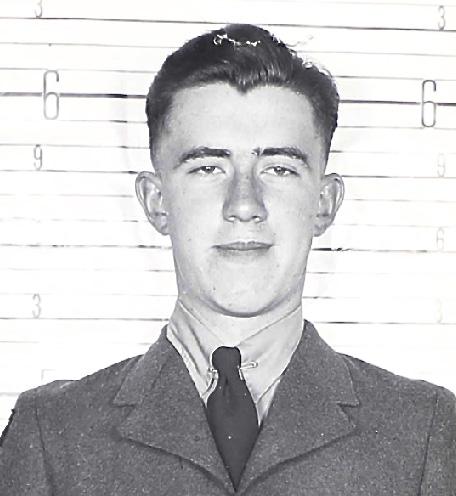
John Herbert Barkwell
Flight Sergeant/Air Gunner John Herbert Barkwell, RCAF, died at age 19 on November 11, 1943, when his Halifax Bomber was lost during an air strike against Cannes, France. He is buried in the St. Desir War Cemetery, Calvados, France.
Charles Raymond Botham
Private Charles Raymond Botham, Princess Patricia’s Canadian Light Infantry (PPCLI), was killed in action at age 21 on May 23, 1944, in the assault on the Hitler Line in Italy. He is buried in the Casino Military Cemetery in Casino, Italy.

Robert John Botham
Able Seaman Robert John Botham, Royal Canadian Navy, died September 20, 1943, at age 22 when his ship, HMCS St. Crowd, was hit by two torpedoes and sank while on convoy duty in the North Atlantic. Having no known grave, his name is inscribed on the Halifax Memorial.


















The history book ‘Grass to Grain’ lists veterans from the area who gave their lives fighting for our freedoms. This is the list from the beginning of WWII and beyond.
Gordon Keith Campbell
Ordinary Seaman Gordon Keith Campbell, Royal Canadian Navy, died at age 18 on September 13, 1942, when his ship, HMCS Ottawa, was sunk by two torpedoes fired by U-91 450 miles east of Newfoundland. Having no known grave, his name is inscribed on the Halifax Memorial.
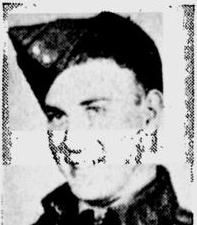
Harry Reginald Code
Private Harry Reginald Code, Royal Hamilton Light Infantry, age 19, was killed February 20, 1945, in the heavy fighting with German forces in the Hochwald Forest some 50 miles southeast of Nijmegen, Holland. He is buried at Groesbeck Canadian War Cemetery, seven miles from Nijmegen.

Arthur Leland Croll
Warrant Officer Class 2 Arthur Leland Croll, RCAF, age 32, died December 12, 1942, on air operations over Tripoli. He has no known grave; his name is inscribed on the Alamein War Memorial, Egypt.

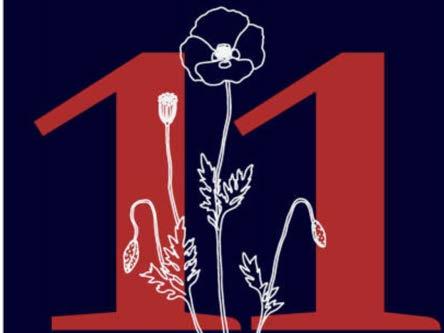
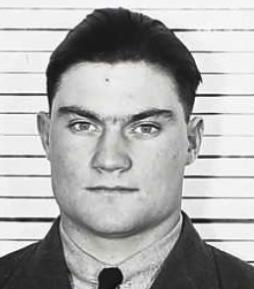
John Wesley Evans
Pilot Officer
John Wesley Evans, RCAF, age 22, EDO, May 24, 1943 when his Sterling Bomber aircraft failed to return from air operations. Having no known grave, his name is inscribed on the Runnymede War Memorial in England.
Frederick William Greenfield
Leading Aircraftsman Frederick William Greenfield, RCAF, age 21, died August 14, 1941, in a crash while training with #3 Service Flying Training School, Calgary, Alberta. He is buried in the Madison Cemetery, Madison, Saskatchewan.

Kenneth Bradley Hicks
Pilot Officer
Kenneth Bradley Hicks, RCAF, died March 8, 1944, at age 26, when the “Mosquito” aircraft he was flying failed to return from a bomber support operation to Stade and Utersen, Germany. Having no known grave, his name is inscribed on the Runnymede War Memorial in England.











































“And they who for their country die shall fill an honoured grave,





soldier’s tomb, and beauty weeps the brave.” - Joseph Rodman Drake
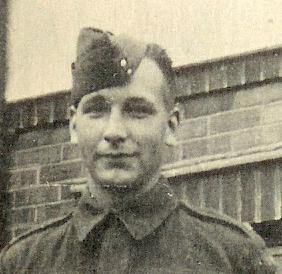
Elmer James Lee
Private Elmer James Lee, Royal Canadian Regiment, died August 27, 1940, at age 21 in a German bombing raid. He is buried in the Brookwood Military Cemetery near London, England.

William James McAlister
Able Seaman William James McAlister, age 20, Royal Canadian Navy, died when his ship, HMCS Margaret, was sunk by collision in heavy fog 400 miles west of Ireland on October 22, 1940. Having no known grave, his name is inscribed on the Halifax Memorial.

Gordon Cameron McDonald
Pilot Officer Gordon Cameron McDonald, RCAF, died August 24, 1942, at age 21 when his battle-damaged Lancaster Heavy Bomber crashed four miles north of Charleroi, Belgium. He is buried in the Communal Cemetery, Gosselies Hainault, Belgium.

Ivan George McDonald
Private Ivan George McDonald, South Saskatchewan Regiment, died of his wounds at age 22 on September 21, 1944, in what has been called the Battle of the Scheldt Estuary west of Antwerp, Belgium. Ivan was buried in Adegem War Cemetery near Ghent, Belgium.
Donald Douglas McKeracher
Private Donald Douglas McKeracher, Argyll and Sutherland Highlands of Canada, age 22, was killed on January 30, 1945, near S’Hertogenbosh, Belgium. He is buried in the Groesbeck Canadian War Cemetery near Nijmegen, Holland.

Glen Alex McNichol
Flying Officer
Glen Alexander McNichol, RCAF, age 21, died April 17, 1943, when his Lancaster suffered severe damage from the flak guns near Pilsen.
Wounded in both legs and flying with only two engines, he managed to keep flying until a night-fighter finished off the crippled Lancaster. He crash-landed on the Main Street of the little town of Pontavert. Glen was killed when the plane hit a house at the end of the street; the rest of the crew survived. He is buried in the Pontavert Communal Cemetery, Pontavert, France.

John Allen McPhee
Flight Sergeant/Air Gunner John Allen McPhee, RCAF, age 20, died December 12, 1942, while crash-landing his Halifax Heavy Bomber near Helmsley, Yorkshire. He is buried in St. Catherine Churchyard, Barmby-on-the-Moor, Yorkshire, England.
Arthur Theodore Morgan
Flight Sergeant Arthur Theodore Morgan, RCAF, age 29, died from complications from surgery in a London hospital on August 9, 1942. He is buried in the Brookwood Military Cemetery near London, England.
Noel Harvey Moysey
Flying Officer Noel Harvey Moysey, RCAF, died August 13, 1944, at age 22 when his Liberator Bomber crashed after take-off at Mysor Airport, India. He was buried in the Madras War Cemetery in India.
Earl Austin Mullis
Flight Sergeant Earl Austin Mullis, RCAF, was killed on March 21, 1942, aged 21, when his Hurricane fighter was shot down 30 miles southwest of Gazala Inlet off the coast of North Africa. Having no known grave, his name is inscribed in the Alamein War Memorial, Egypt.

Robert James Painton
Lieutenant Robert James Painton, 1st Canadian Special Service Battalion, age 22, was killed in action on September 13, 1944, after an airborne landing northeast of Marseilles, France. He is buried at Mazargues Cemetery Extension, Marseilles, France.
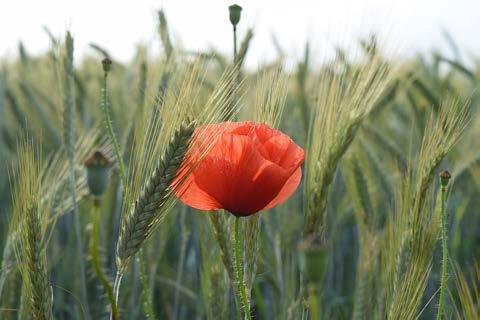








Rifleman
Robert T. Peach



Robert T. Peach, 1st Battalion, Regina Rifle Regiment, was killed in action on August 19, 1944, aged 25, probably during the action to secure the local airport. He is buried at the BrettevilleSur-Laize Canadian War Cemetery, which is near Caen, France.
Wilfred Arthur Pearce
Captain Wilfred Arthur Pearce, Royal Canadian Infantry Corps, was killed in action in Belgium on September 26, 1944, at the age of 36. He is buried in the Leopoldsburg War Cemetery, Belgium.
Alexander Robert Phillips
Private Alexander Robert Phillips, Regina Rifle Regiment, died of his wounds on December 2, 1944, at age 21, in the fighting in and around Antwerp. He is buried in Brookwood Military Cemetery near London, England.
Jon Arthur Wellbelove
Lieutenant John Arthur Wellbelove, 1st Airborne Battalion, Border Regiment, was killed in action at age 24 on September 25, 1944, in Oosterbeek, Holland during the battle at Arnhem. He is buried in the Arnhem British Cemetery, Arnhem, Holland.
Steven Richard West
Rifleman
Steven Richard West, Regina Rifle Regiment, was killed by enemy action near Calais, France, at age 35 on September 25, 1944. He is buried in the Calais Canadian War Cemetery, Calais, France.
George Walen
Flight Sergeant/Wireless Operator/Air Gunner George Walen, RCAF, age 21, died March 5, 1943, when his Wellington Heavy Bomber failed to return from a night operation over Essen, Germany. His name is inscribed on the Runnymede War Memorial, Englefield Green, Surrey, England.
Frederick Stevenson
There is one more former Eston resident who died in combat, albeit after the end of the Second World War. Sometime between November 29, 1947 and June 11, 1948, Frederick Stevenson, a veteran of WWII when he served in the RCAF, was killed while flying for the Israeli Air Force during the Arab/Israeli war. His body was recovered, and he is buried in Tel Aviv.
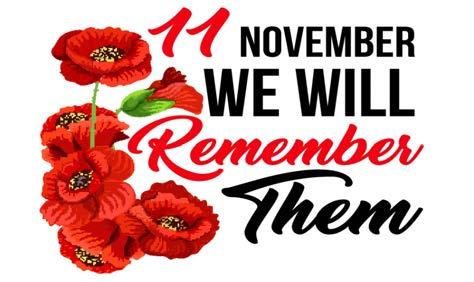
















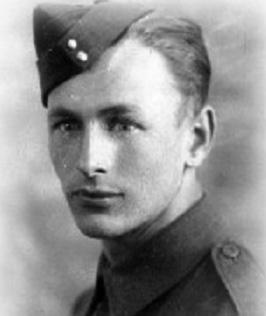
Signalman Oscar Albrecht
Army Leader, Saskatchewan
Died: July 17, 1944
Commemorated at Bretteville-sur-Laize Canadian War Cemetery, France
Oscar Albrecht, born January 24, 1919 at Leader, Saskatchewan, completed his education in 1936 at Leader. While working for Pioneer Grains there, Albrecht joined The King’s Own Rifles of Canada (M.G.) in 1940. He went on to work for Gas City Flour Mill in Medicine Hat, Alberta before returning to work at Pioneer Grains as a grain buyer. Following enlistment at Regina, Saskatchewan February 17, 1942, Albrecht served with the Royal Canadian Corps of Signals attached to the 2nd Canadian Divisional Signals as a Signalman during the Second World War. Landing in France June 25, 1944 with the 2nd Canadian Infantry Division, 9th Infantry Brigade, the Signals advanced towards Carpiquet, stringing signal lines and providing radio communications for the Allies during the capture of Caen. On July 17, 1944, Signalman Oscar Albrecht died during an assault near Caen and is commemorated at Bretteville-sur-Laize Canadian War Cemetery, Calvados, France. He was 25 years old. Citation(s): 1939-1945 Star, France-Germany Star, Defence Medal, War Medal, Canadian Volunteer Service Medal with Clasp.
















































26, 1945
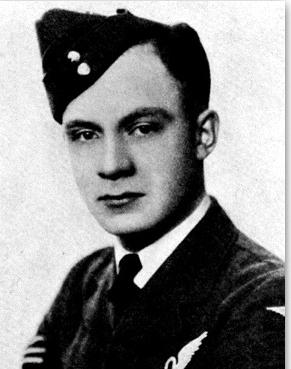














Private Barry Cocks of Leader, Sask., was among the thousands of Canadians who gave their lives in the battle to liberate France during the Second World War.
Born June 16, 1922, Cocks was the fourth of seven children of David and Esther Cocks of Leader. Before the war, he worked in his father’s dray business until he was called up for National Resources Mobilization Act training in Regina in 1942.
He later joined the Regina Rifle Regiment, part of the 3rd Canadian Infantry Division. On D-Day, June 6, 1944, the Regina Rifles landed on Juno Beach, in the Nan Green sector, with the task of advancing inland to capture the city of Caen.
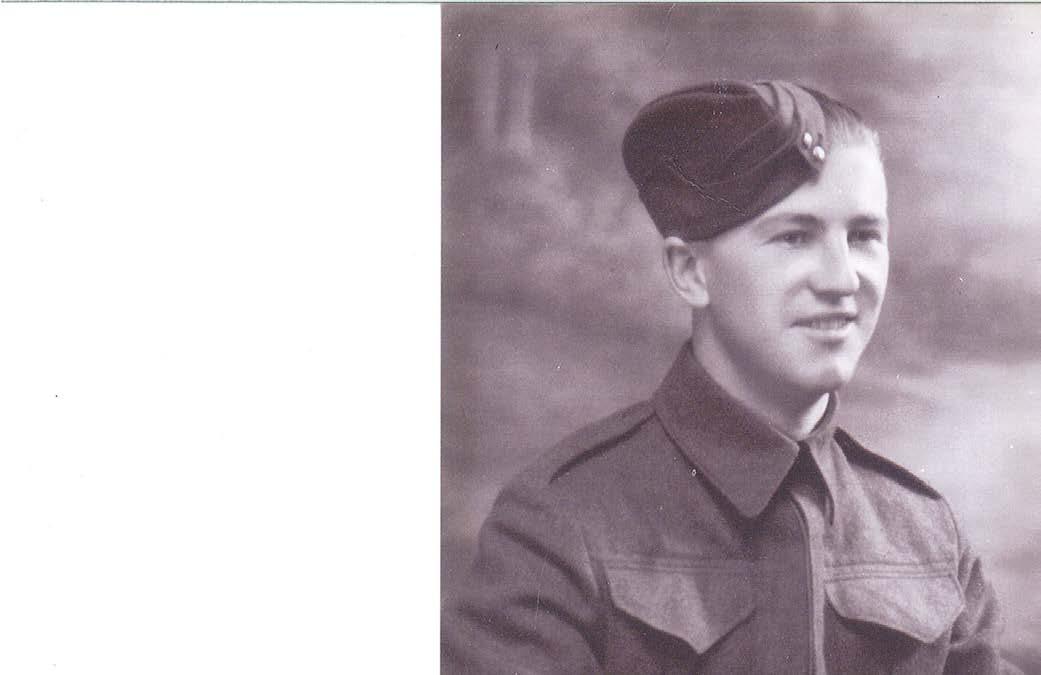
Cocks was killed in action by a sniper near Caen on July 17, 1944. His close friend, Private Alfred Nagel, also of Leader, carried him to safety in a nearby church, where Cocks died of his wounds. The church pastor later sent Cocks’ pack home to his father in Leader, keeping a promise he had made to the young soldier before he died.
Private Cocks is commemorated at the Bretteville-sur-Laize Canadian War
Observer
Frederick Joseph Matkin
Royal Canadian Air Force Leader, Saskatchewan Died: September 8, 1941
Commemorated at Kiel War Cemetery, Germany




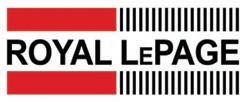

















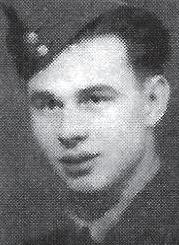
Sergeant Murray Stewart Dewar
Royal Canadian Air Force
Dodsland, Saskatchewan
Died: January 11, 1943
Commemorated at Hoosier Cemetery
Murray Stewart Dewar, born July 2, 1920 at Dodsland, Saskatchewan, grew up on the family farm in Hoosier, Saskatchewan. After completing his education at Hoosier High School in 1939, Dewar worked on the family farm for a year before working at the Kerr-Addison Gold Mines in Virginiatown, Ontario as a miller. Following enlistment at Saskatoon, Saskatchewan October 4, 1941, Dewar served with the Royal Canadian Air Force (Per Ardua Ad Astra) attached to No. 10 Service Flying Training School at Dauphin, Manitoba as a Sergeant during the Second World War. Under the British Commonwealth Air Training Plan, Dewar attended No. 2 Initial Training School before advancing to No. 15 Elementary Flying Training School, both in Regina, Saskatchewan, learning navigation and training on Tiger Moth and Fairchild Cornell aircraft. Dewar transferred to the No. 10 Service Flying Training School at Dauphin, Manitoba where he flew Harvard and Cessna-Crane aircraft. On January 11, 1943, Sergeant Murray Stewart Dewar died during an instrument training test when his Cessna-Crane crashed north of Ashville, Manitoba. A student pilot and in only his fifteenth month with the Royal Canadian Air Force, Dewar is commemorated at Hoosier Cemetery, Saskatchewan. Son of James S. and Ruby Doris (nee Taylor) of Hoosier; brother of Charles Donald, Gordon Taylor, Mildred Doris, Julene Mary, Claire Elaine and Lois Audrey; he was 22 years old. Citation(s): War Medal, Canadian Volunteer Service Medal.
























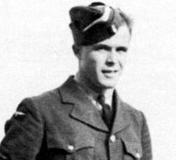
Flight Sergeant
Louie James Devlin
Royal Canadian Air Force
Druid, Saskatchewan
Died: May 30, 1942
Commemorated at Knightsbridge War Cemetery, Libya

Private Frank Theodore Peter Netzel Army
Dodsland, Saskatchewan
Died: July 5, 1943
Commemorated at Cassino Memorial, Italy
FrankTheodore Peter Netzel served as a Private with the Royal Canadian Army Medical Corps, 9th Field Ambulance during the Second World War. He was killed in action when his Red Cross ship was torpedoed and sunk in the Mediterranean Sea enroute to the invasion of Sicily, July 5, 1943. Private Netzel has no known grave, he is commemorated on the Cassino Memorial, Italy. Of the 49,261 members of the Commonwealth forces who died in the fighting in Italy, nearly one-tenth have no known grave. The 4,054 names recorded on the Cassino Memorial include those of 194 Canadians. He was 29 years old. Prior to enlisting in the army Frank worked as a Section Hand with the CNR in Blue River, British Columbia and Mount Netzel northwest of Blue River was named in his honour.
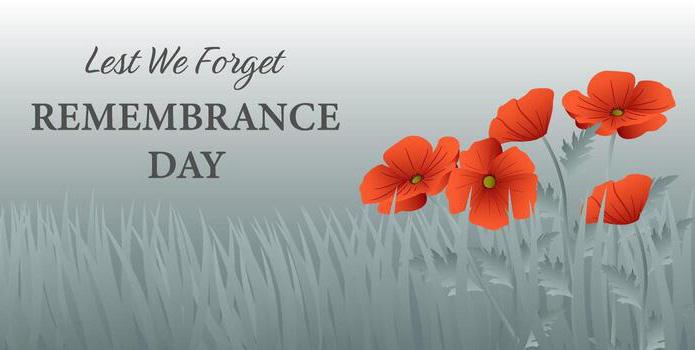







Pilot Officer
Sidney John Rogers Air Force
Plenty, Saskatchewan
Died: February 26, 1944
Commemorated at Runnymede Memorial, England
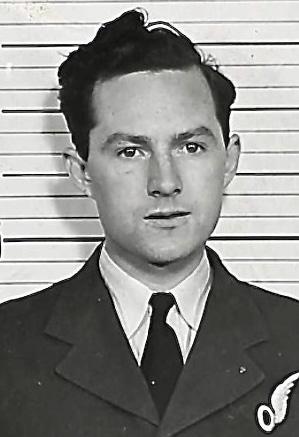
William John Poulin
Royal Canadian Air Force
Dodsland, Saskatchewan
Died: September 1,1943
Commemorated at Poix-de-Picardie Churchyard, France
William John Poulin of Dodsland, Saskatchewan served with the Royal Canadian Air Force during the Second World War as a Flight Sergeant Navigator attached to #158 (R.A.F.) Squadron. The squadron took part in many major raids on naval and industrial targets, including the first 1,000 bomber raid, as well as minelaying operations. Poulin was killed in action September 1, 1943 when his Halifax aircraft crashed in France, due to enemy action, while engaged in night operations to Berlin, Germany. The son of Skinner Poulin, a businessman from Dodsland, William John Poulin was 21 years of age and is commemorated at the Churchyard at Poix-de-la Somme, Somme, France.
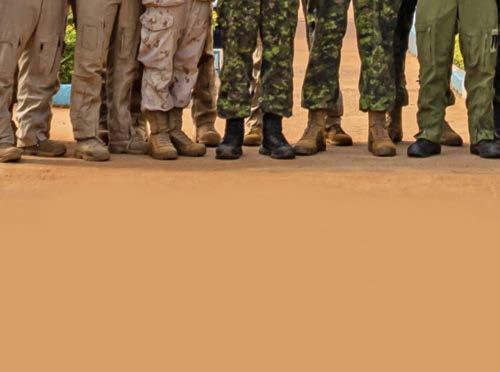
















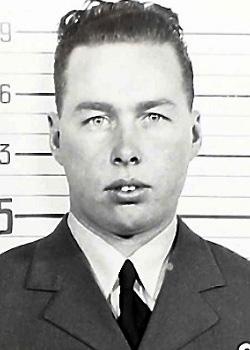
Sergeant James MacKay
Royal Canadian Air Force
Dodsland, Saskatchewan
Died: December 16, 1943 Commemorated at Harrogate (Stonefall), Yorkshire, England
JamesMacKay, born April 13, 1920 at Tain, Ross-shire, Scotland, came to Canada with his family in June 1925, settling in Saskatchewan as homestead farmers. MacKay completed his education at Viewfair School at Dodsland, Saskatchewan in 1936 before working as a farm labourer on the family farm at Dodsland. Following enlistment at Saskatoon, Saskatchewan December 28, 1942, MacKay served with the Royal Canadian Air Force attached to the No. 426 (Thunderbird) Squadron (On Wings of Fire) as a Flying Officer (Air Bomber) during the Second World War. Part of Bomber Command’s No. 6 (R.C.A.F.) Group and based at RAF Linton-on-Ouse, Yorkshire, England, the squadron flew Lancaster bombers in bombing raids over France and Germany. On December 16, 1943, Flying Officer (Air Bomber) James MacKay died after his Lancaster bomber crashed in bad weather at Yearsley, North Yorkshire following a raid on Berlin, Germany. He is commemorated at Harrogate (Stonefall), Yorkshire, England, on the Bomber Command Memorial Wall, Nanton, Alberta and on the Dodsland Memorial, Saskatchewan. Only son of James Donald and Catherine (nee Campbell) MacKay of Dodsland; brother of Elizabeth and Kate MacKay; he was 23 years old. MacKay Lake, near Thompson Lake, Saskatchewan is named in his honour. Citation(s): 19391945 Star, Aircrew Europe Star, General Service Medal, Canadian Volunteer Service Medal with Clasp.
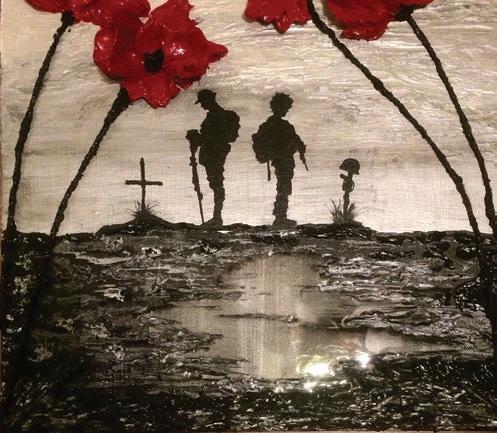

















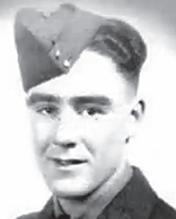

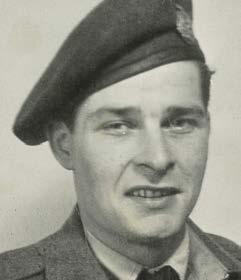





















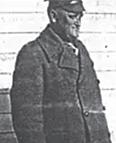












































Elizabeth Douglas Allan, R.N., affectionately known as “Nurse Allan,” is remembered for a lifetime of service and compassion that touched countless lives across rural Saskatchewan.
Born in Elgin, Moray, Scotland, Allan came to Canada to join her sister in Kindersley. She often spoke proudly of her roots as the daughter of a Scottish crofter.
After working in Manitoba to pay off her passage, she moved to Kindersley and later trained as a nurse at Regina General Hospital, graduating in 1918. Even before completing her studies, she enlisted in the Canadian Army Medical Corps and sailed for Britain, though the First World War ended before she could serve in France.
Allan went on to serve as matron in several cottage hospitals, including at Eatonia beginning in 1925. Known for her generosity, she often spent her own money to help patients — buying baby layettes for new mothers and clothing and toys for children with long-term illnesses. Many of those she cared for remained lifelong friends.
In 1937, she received a King George VI medal as superintendent of one of Saskatchewan’s leading small hospitals, recognized for its record of being free from infectious disease.
Allan married Harold Beechinor on Dec. 16, 1938, and lived with him on a farm near Mantario before returning to nursing in 1940. She continued to work until ill health forced her retirement.
Elizabeth Douglas Allan died Sept. 25, 1979, in Calgary, leaving behind a legacy of service, kindness and professional excellence.
Source: “A Past to Cherish.”
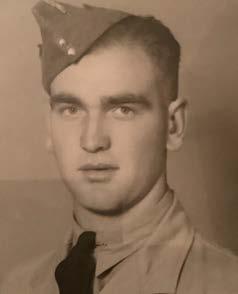
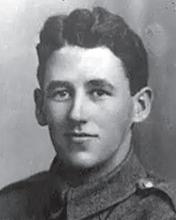
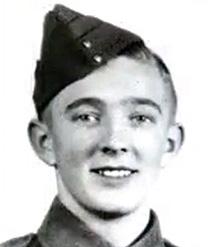


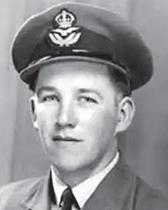
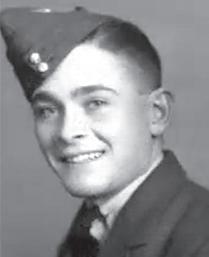
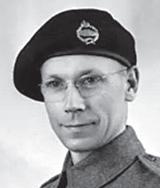







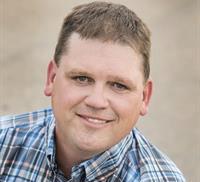



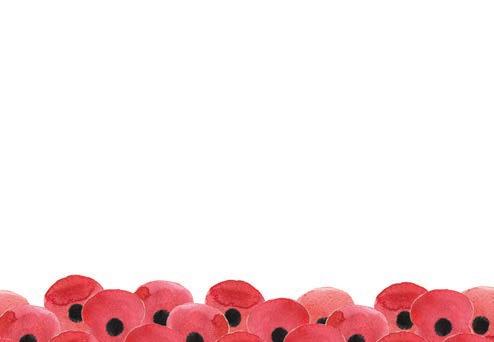



















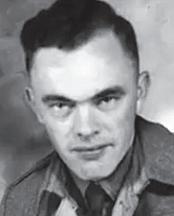





























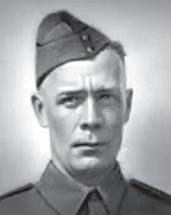


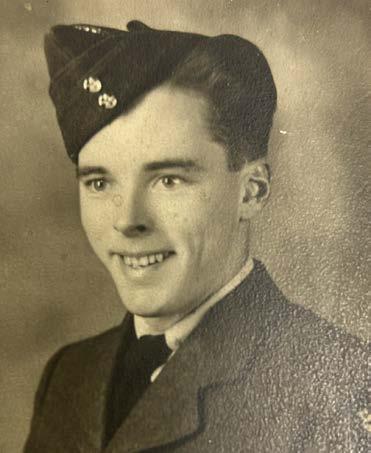
The Lewis family of Kindersley embodies the sacrifice and service of Canadians across two world wars. Herman Humphrey Lewis and his son, Gilbert Allen Lewis, both answered their country’s call, leaving a lasting mark on their community and nation.
Herman H. Lewis was born on April 13, 1893, in Salsbury, New Brunswick. He enlisted in the Canadian Expeditionary Force’s 55th Battalion on March 24, 1915, serving overseas in England and France during the First World War. For his service, Herman was awarded the British War Medal and the Victory Medal.
Following the war, Herman returned to Canada on March 25, 1919, accompanied by his British bride, Mary Monica Inch of Torquay, England. The couple settled on a homestead south of Kindersley, where they built a life and raised four children: Allen, Dorothy, Stewart, and Grace. Herman remained an active community member, contributing to the Legion, St. Paul’s United Church, the Men’s Chorus, Kindersley Co-op, Saskatchewan Wheat Pool, and the Co-operative Commonwealth Fed-






Private William Roy Hawes of Kindersley, Sask., was among the many young Canadians who gave their lives in the Battle of Vimy Ridge.
Born Nov. 17, 1896, in Guelph, Ont., Hawes moved west with his family to homestead near Kindersley. Single and working as a clerk, he enlisted in Saskatoon on March 8, 1916.

After going overseas with the 65th Battalion that June, Hawes served with the 46th Battalion (South Saskatchewan), part of the 10th Infantry Brigade, 4th Canadian Division. The battalion saw heavy fighting along the Western Front in France and Belgium.








eration. He was also honoured with a lifetime membership in the Kindersley Fish and Game League.
Their eldest son, Gilbert Allen Lewis, born in Kindersley in June 1921, followed in his father’s footsteps in service to Canada. After graduating from McKenzie School in 1939, Allen obtained his pilot’s license and enlisted in the Royal Canadian Air Force. He served with 640 Squadron of the Royal Air Force and later with RCAF Bomber Command.
Allen was killed in action on May 13, 1944, during a raid on Hasselt, Belgium. He is buried in the Haverlee War Cemetery near Leuven, Brabant, Belgium. At the time of his death, Allen was married to Anne Weir of Wish, Scotland, and they had a daughter, Margaret. His legacy endures in the naming of Lewis Falls on the Haultain River in Saskatchewan.
The story of Herman and Allen Lewis reflects the courage and commitment of generations of Canadians who served in both world wars. Their dedication to country and community continues to inspire, reminding all of the sacrifices made for freedom.
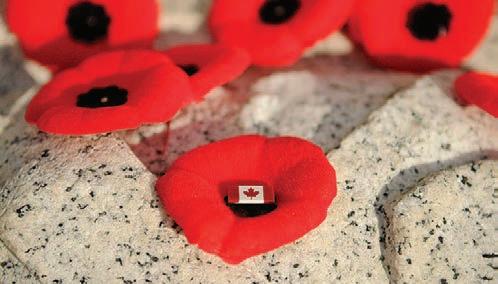

Hawes was killed in action on April 11, 1917, during the battle for Vimy Ridge. He is commemorated on the Vimy Memorial in Pas de Calais, France.
He was the son of George Henry and Margaret Christina (née Rudd) Hawes of Kindersley, and brother to John, George Harvey, Norman, Ethel, Olive and Frederick. Private William Roy Hawes was 20 years old.

Flight Sergeant Joseph Roderick Gerald “Jerry” MacDonald Royal Canadian Air Force Kindersley/Abbey, Saskatchewan
Died: July 26, 1943
Commemorated at Eindhoven (Woensel) General Cemetery, Netherlands




WWI (1914-1918)
Addison, Thomas Bruce, Joe Carpenter, Ben Carpenter, Sidney Derraugh, Robert Elder, Frank Fielder, Fred Gardiner, William Gilbertson, George Green, Arthur Green, John William Halliday, Finley Halliday, George Hummel, Clifford Johnson, Oscar Lenheiser, Herbert McKenzie, Donald Murphy, Charlie Murphy, Walter Nicholls, Joseph Reid, Fred Ritchie, Robert John Rowles, Charles Stapely, Alfred Townsend, Cliff Turner, Alfred Witmer, Harvey Wotherspoon, John
WWII (1939-1945) Adams, Arthur Anderson, Thomas Anderson, William Appleby, Gordon Bruce, Lloyd Bruce, Maitland Cann, Curly Clarkson, Delroy Clarkson, Douglas Clayton, Kenneth Clayton, Theodore Derraugh, Douglas Gilbertson, Jack Gregerson, Robert McPherson, G.D. Renwick, Verne Townsend, Robert Veldhoen, Cory
HONOUR ROLL
Appleby, Floyd Ellefson, Edward Lockwood, Duane Lockwood, Merton Renwick, Clifford
Info from “Echoes of Pinkham Pioneers”




















Private John Phillips Army
Luseland, Saskatchewan
Died: November 10, 1917












Commemorated at Menin Gate (Ypres) Memorial, Belgium
Killed in Action - 1914 to 1918
Walter Boulton
David Gordon
George Gordon
Harry Hoddinott
Bert Mathews
Rupert Nelson
Walter Penrice
John Philips
Killed in Action - 1939 to 1945
Kenneth Aldridge
Jack Coady
Allan Creighton
Keith Danielson
David Gillingham
Robert Land
Lawrence Marshall
Lawrence Ryan
Tony Siegel
James Sim
Everett Bates
Doug Bell
John Bineider
Mary Bineider
Walter Boulton
Bob Bruton
Andy Budd
Henry R. Budd
Mike Busch
Bert Callum
Archie Campbell
J.D. Campbell
R.A. Campbell
Jack Coady
Nelles Culp
Edwin A. Danielson
Keith Danielson
R.J. Davidson
R.A. Dixon
Nick Dvorak
William Eby
Alex Engelhart
David Eurich
Glenn Ferguson
John Ferguson
Margaret (Ferguson)
Honeker
James Finley
Adam Flahr
Alex Gerlinsky
Adam German
Bill German
Gilbert German
John German
Mike German
Gerald Gerrard
Lawrence Gerrard
David Gillingham
Dr. E.R. Graham
Robert Haugen
John Herner




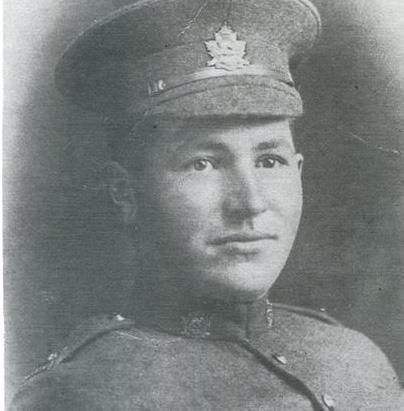












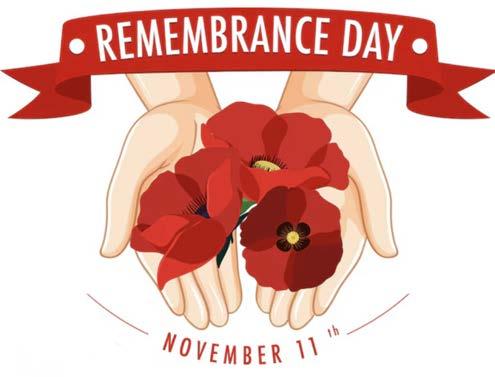








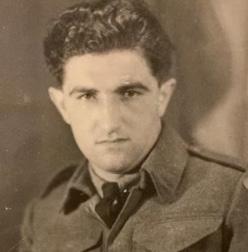
Luseland, Saskatchewan
Joined when he was 17 (lied about his age) in 1940 and served until the end of war in 1945.
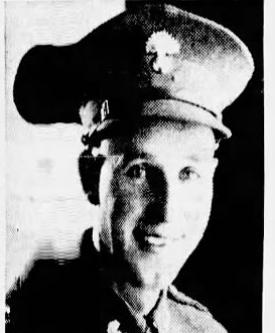
John Alfred Coady Army Luseland, Saskatchewan Died: October 9, 1942
Commemorated at Sai Wan War Cemetery, Victoria, Hong Kong
Son of William Angelo Coady and Mary Devasteen Griffin, of Luseland. William Angelo enlisted in 1917 – NRMA – in the 14th Charlottetown Regiment, transferred on March 18th, 1918 to the Nova Scotia Regiment, regimental number 3204287, served in Nova Scotia, England, Fought in France with the 17th Battalion of the Canadian Expeditionary Force, in 1943 with the 30th Company, 4th Platoon of the Veteran Guard of Canada (Alberta), regimental number L-32758. Brother of Sapper Vernon Coady, regimental number L-19253, 14th Field Company, Royal Canadian Engineer. He survived combat in Europe.
Enlisted in the 12th District Depot, 2nd Division Infantry Rifles, served in Saskatchewan, Manitoba, transferred October 23rd, 1940 to Company A, 1st Battalion of Winnipeg Grenadiers, served in Hong Kong with Force C. He had 795 days of service, including 347 overseas.
























Royal Canadian Air Force
Rudy signed up in the army on November 19, 1941.
He was only 20 years old. He was enlisted with the British Columbia Dragoons, an army tank regiment.
He served in Italy, France, Germany, the United Kingdom and North Africa. He was assigned to a tank regiment on the front lines.
From a letter sent home at Christmas time, 1943, Rudy was in North Africa. He makes mention that the people don’t wear shoes there, and also that he was so thrilled to be able to pick oranges from the trees in an orchard not far from where he was stationed. He says the first morning he awoke early at 5:00 a.m. and snuck down the road to the orchard and filled his kit bag. He also mentions in this letter to his parents, that there was lots of dates, figs and lemons.
He goes on to say, that he really didn’t care for the country, but that it was a great experience.
Upon his discharge March 8, 1946, when he returned to civilian life, he married Margaret Bosch, and with the help of the VLA (Veteran’s Land Act) they purchased land south of Smiley, Saskatchewan. Together Rudy and Margaret raised six children on their farm.
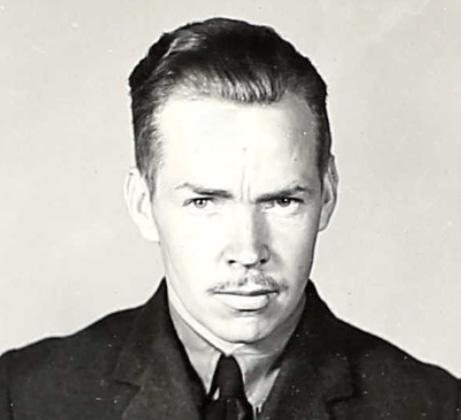
Royal Canadian Air Force
Major, Saskatchewan
Died: February 29, 1944
Commemorated at Chester (Blacon) Cemetery, Cheshire, UK
Dodsland, Saskatchewan
Died: December 16, 1943
Commemorated at Harrogate (Stonefall), Yorkshire, England






























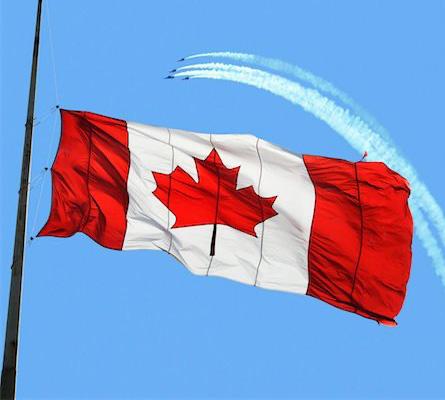


Sergeant Gordon Henry Slaughter Army
Kindersley, Saskatchewan
Died: May 18,1918 Commemorated at Longuenesse (St Omer) Souvenir Cemetery, France
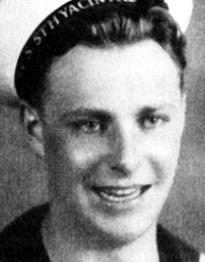








Pilot Officer John William Hickson
Royal Canadian Air Force
Kindersley, Saskatchewan Died: Mar 28,1945
Commemorated at Runnymede Memorial, England



























Able Seaman Joseph McGrath Navy
Kindersley, Saskatchewan Died: Aug 28,1943
Commemorated at Halifax Memorial, Canada

Flight Sergeant Clarke Edward Quickfall
Royal Canadian Air Force
Kindersley/Dodsland Sask Died: Dec 2,1943
Commemorated at Esbjerg (Fourfelt) Cemetery, Denmark
Peter Thompson, an Ordinary Seaman with the Royal Canadian Navy, is remembered for his service and sacrifice during the Second World War.
Born May 27, 1923, in Durham, England, Thompson moved to Canada with his family in 1928 and completed his education at Renown, Saskatchewan. Before enlisting, he worked as a clerk with T. M. McEwan Company in Kindersley.
Thompson joined the Royal Canadian Navy Volunteer Reserve at H.M.C.S. Unicorn in Saskatoon on January 6, 1942. He served as a telegraphist aboard H.M.C. Motor Torpedo Boat 460, part of the 29th Motor Torpedo Boat

Flotilla, which operated in the English Channel against German Schnellboots, Räumboots, and Minensuchboots.
On July 3, 1944, Thompson was killed when H.M.C. Motor Torpedo Boat 460 struck a mine during operations in the English Channel. He was 21 years old.
Thompson is commemorated at the Halifax Memorial, Nova Scotia. He was the son of John Howie and Ethel Fittis Thompson, brother of Ethel, Betty, and Robert, and half-brother of John, Mary, Annie, and Margaret. His service earned him the 1939–45 Star, Atlantic Star with Clasp, Canadian Volunteer Service Medal with Clasp, and the War Medal.


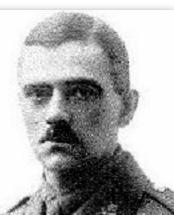
Second Lieutenant John Genge Army
Kindersley, Saskatchewan
Died: March 24, 1918
Commemorated at Honourable Artillery Company Cemetery (Ecoust-St. Mein), France






































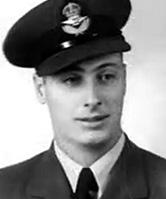

Private Albert Joseph Abram Army
Kindersley, Saskatchewan
Died: July 20, 1944
Commemorated at Bretteville-sur-Laize Canadian War Cemetery, France
Albert Joseph ‘Bert’ Abram, born November 17, 1920 at Kindersley, Saskatchewan, moved to The Pas, Manitoba with his family where he completed his education. A motor mechanic by trade, Abram later worked at a sawmill in Carrot River, Manitoba. Abram enlisted April 2, 1942 with the 1st Battalion, Prince Albert Volunteers at Regina, Saskatchewan. Following training, Abram served with the Royal Canadian Infantry Corps attached to the South Saskatchewan Regiment as a Private during the Second World War. The regiment landed in Normandy, France in early July 1944 with the 6th Infantry Brigade, 2nd Canadian Infantry Division. On July 20, 1944, Private Albert Joseph Abram died during the capture of Verrières Ridge, from the 1st Leibstandarte Adolf Hitler SS troops. Abram is commemorated at Bretteville-sur-Laize Canadian War Cemetery, Calvados, France. He was 23 years old. Citation(s): 1939-45 Star, France-Germany Star, Defence Medal, War Medal, Canadian Volunteer Service Medal with Clasp.











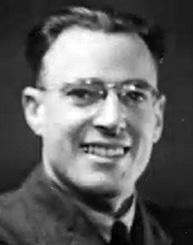
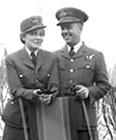



Richard John (Jack) Jones April 1914 - April 1917 WWI
1914 World War I - Joined North Hampton Yoemanery Served in Belgium and France April 1915 - April 1917 1917 - Wounded near Aaras and was sent back to hospital.
He was on the ship which torpedoed in the English Channel. The ship sank in 20 minutes. He was rescued by the crew from The Destroyer. After convalescence in England, he rejoined the regiment in Italy. Demobilized March 1919.
Past President and Life Member of the Kindersley Branch of the Royal Canadian Legion.
Passed away June 26, 1973.
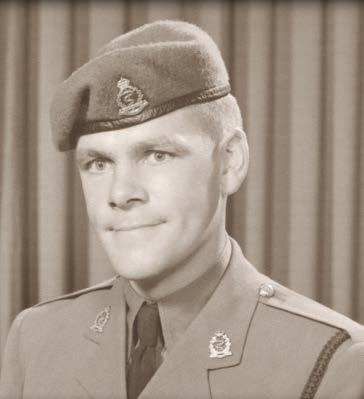











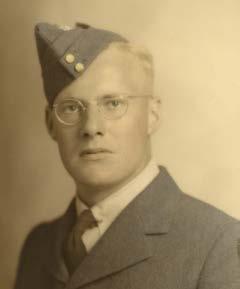




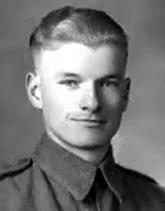

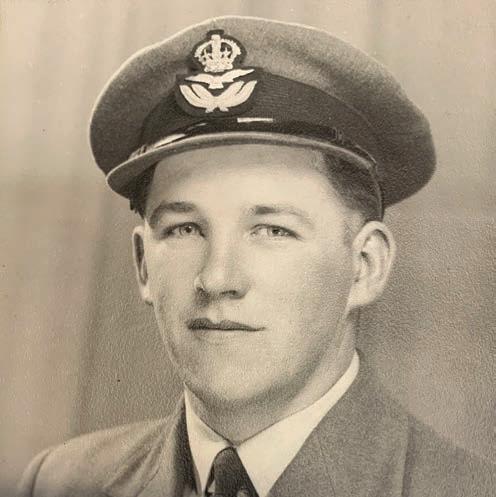
P.C. Ronald John Jones DFC R.C.A.F. WWII
November 16, 1942 - July 24, 1945
Ronald was a Mid Upper Air Gunner and completed 33 operational tours with 626 squadron R.A.F.
On December 31, 1944 on a bombing op. over Osterfeld, they were attacked by a ME 109, which they shot down. They crash landed at Manson, England with a wounded R/G and F/E aboard.
Ron was awrded the Distinguished Flying CRoss for his assistance in destroying the attacker.
He was discharged July 24, 1945 and was a member of the Kindersley Branch of the Royal Canadian Legion.
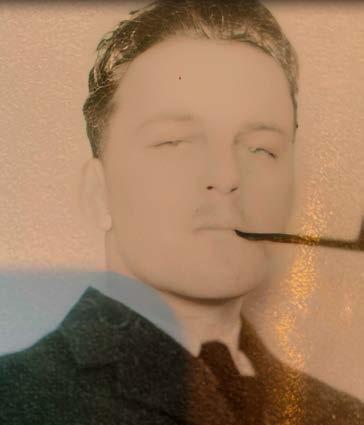






























Private Roy E. Freemont Wood of Major, Saskatchewan, was one of thousands of Canadians who gave their lives in the First World War while serving with the storied 46th Battalion — a unit later known as the “Suicide Battalion” for its staggering losses in battle.
Born on Sept. 27, 1885, in Major, Wood was a farmer before enlisting in Saskatoon in April 1915. He joined the Canadian Infantry (Saskatchewan Regiment), 46th Battalion, which drew recruits from across the province and was mobilized in Moose Jaw.
The battalion sailed for Britain that October and arrived in France the fol-
lowing August, where it joined the 10th Infantry Brigade of the 4th Canadian Division. The men of the 46th endured some of the harshest fighting of the war in France and Flanders, suffering more than 1,400 killed and nearly 3,500 wounded before the war’s end.
Private Wood was killed in action on Nov. 8, 1916, during operations in the Somme region of France. He was 31.
He is buried and commemorated at the Albert Communal Cemetery Extension in Somme. Wood was the son of Charles Wood of Clear Lake, Minnesota, U.S.A.
Private William Aitken, a carpenter from Major, Saskatchewan, was among the many Canadians who gave their lives during the Battle of Passchendaele in the First World War.
Born July 5, 1886, in Slains, Aberdeenshire, Scotland, Aitken immigrated to Canada and was living in Major when he enlisted at Winnipeg, Man., in April 1917. He served with the Canadian Infantry (Manitoba Regiment), 8th Battalion.
In November 1917, his battalion was engaged in heavy fighting around
Ypres, Belgium, as Canadian forces fought to capture and secure the village of Passchendaele. The village fell on Nov. 6, but the battle continued as Canadian troops pressed the enemy lines.
Aitken was declared missing and presumed killed in action on Nov. 10, 1917. He was 31.
Private Aitken is commemorated at the Menin Gate (Ypres) Memorial in Belgium. He was the son of Mrs. Duncan Peters of Slains, Aberdeenshire, Scotland.
Two brothers from Smiley, Saskatchewan, lost their lives serving with the Royal Canadian Air Force during the Second World War.
Pilot Officer George Edward Deatherage, 24, died December 17, 1944, when his Lancaster bomber crashed northeast of Ulm, Germany, during a night raid. Born August 22, 1920, at Battle Ridge, Alberta, he was the son of Roy Frederick “Fred” and Ida Pearl (nee Mulroney) Deatherage. George was raised in Smiley and completed his education at Smiley School in 1935. Before enlisting in Edmonton, Alta., on February 23, 1943, he worked as a truck driver for sawmills in Dawson Creek, B.C., and at Entwistle and Whitecourt, Alta. Commissioned on October 30, 1944, he served as a Pilot Officer (Air Gunner) with No. 101 Squadron, part of Bomber Command’s No. 1 Group, operating Avro Lancaster aircraft from RAF Ludford Magna, England. George was the husband of Gladys May (nee Hadley) Deatherage and father of Marjorie Verna Deatherage. He is commemorated at Durnbach War Cemetery, Germa-


ny, on the Bomber Command Memorial Wall in Nanton, Alta., and on the Whitecourt Memorial, Alta. His honours include the 1939-1945 Star, France and Germany Star, Defence Medal, General Service Medal, and Canadian Volunteer Service Medal with Clasp. His younger brother, Sergeant Walter David Deatherage, 20, died
September 10, 1942, after his Handley Page Hampden aircraft crashed near Marl, Germany, during a night raid on Düsseldorf. Walter was born September 7, 1922, at Hardisty, Alta., and also raised in Smiley. He completed his schooling there in 1939 and worked for the Whitecourt Lumber Company as a broad saw operator, also farming seasonally at Smiley, before enlisting at Saskatoon on December 5, 1941.
Walter served as an Air Gunner with No. 14 Operational Training Unit, part of the British Commonwealth Air Training Plan, which trained aircrew to operate Hampden aircraft from RAF Cottesmore, England, before posting to an operational squadron. He is commemorated at the Reichswald Forest War Cemetery, Germany, as well as on the Whitecourt Memorial and the Bomber Command Memorial Wall in Nanton, Alta.
The Deatherage brothers are remembered for their courage and service, and their sacrifices remain honoured by the communities where they grew up and worked.




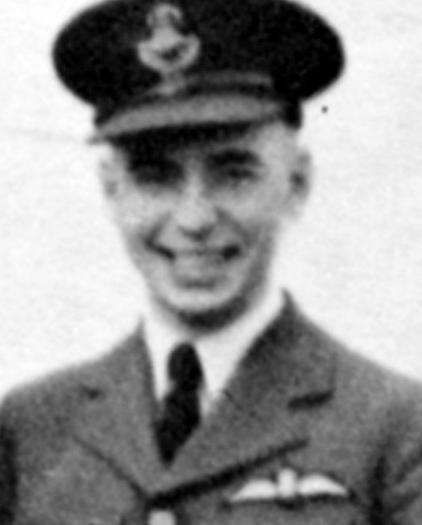
Donald Kenneth Robertson Flying Officer
Royal Canadian Air Force
Kerrobert, Saskatchewan
Died: Nov 2,1942
Commemorated at Monachorum Cemetery; Devon, England
DonaldKenneth Robertson was born May 20, 1919 at Kerrobert, Saskatchewan, the only son of Kenneth and Florence Robertson.
Commissioned August 8, 1941, Donald served with the Royal Canadian Air Force during the Second World War as a Flying Officer. On November 2, 1942, Donald Kenneth Robertson died after his Hawker Hurricane aircraft dove into the ground during a canopy exercise at Elverton and crashed near Tavistock, Devon, England. Donald was 23 years old. He is commemorated at the Buckland Monachorum Cemetery, Devon, England. Citation(s): 1939-1945 Star, Aircrew Europe Star, General Service Medal, Canadian Volunteer Service Medal with Clasp.
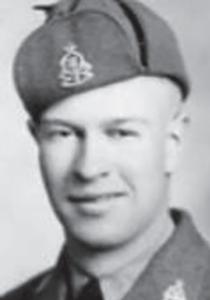
Kerrobert, Saskatchewan
Died: July 20, 1941
Commemorated at Agira Canadian War Cemetery, Italy
L9905Private (Royal Canadian Ordnance Corps) Denys Richard Duckett (b.1922) of Kerrobert died 19430725 of wounds incurred three days earlier and is buried at Agira Canadian war cemetery, Enna, Sicily, Italy. He was the son of Richard and Margaret Joyce Duckett. Denys was born at Garmston, Shropshire, England, and came to the Kerrobert area with his family at the age of four. He was farming when he enlisted at Saskatoon late in 1941. His family returned to Shropshire after the war.


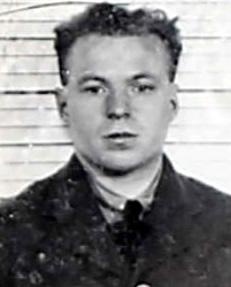
Royal Canadian Air Force
Kerrobert, Saskatchewan
Died: Sep 25,1944
Commemorated at Bergen-op-Zoom Canadian War Cemetery, Holland
Walter Nelson Auld was born May 19, 1917, at Youngstown, Ontario, the elder son of Wallace Chapman and Nettie Emelia (nee Nelson) Auld, and the brother of Leading Aircraftman Douglas C. (RCAF), Margaret Grace, and Shirley Jean Auld. In 1924, Walter and his family moved west, and lived at Kerrobert, Sask. and Castor, Alberta. Walter enlisted at Calgary August 1, 1941. Overseas in January 1943, Walter served with the Royal Canadian Air Force during the Second World War as a Pilot Officer (Pilot). On September 25, 1944, Walter Nelson Auld died after his Beaufighter aircraft was shot down during an attack on enemy shipping, and crashed one mile east of Den Helder, Noord-Holland.
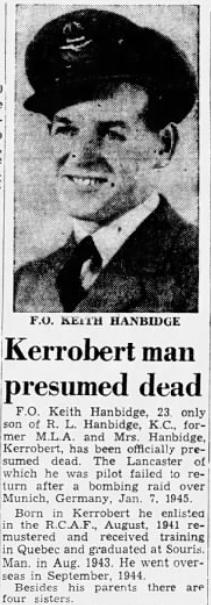








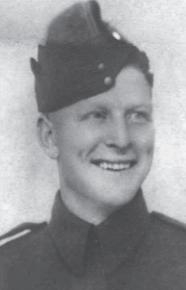
Gunner Nelson Steele Allcock Army
Kerrobert, Saskatchewan
Died: July 20, 1941
Commemorated at Dodsland, SK
L255Gunner (2nd Light Anti-Aircraft Regiment, Royal Canadian Artillery) (Nelson) Steele Allcock (b.1918) of Kerrobert died 19410720 and is buried at Brookwood military cemetery near Woking, Surrey, England. Allcock was a despatch rider and died at Lewisham hospital two days after his motorcycle collided with a bus. Steele was born at Pasqua (east of Moose Jaw) to Thomas Everet and Ethel Beatrice Allcock, attended Avoca school, and had just started farming on his own when he enlisted at Regina in 1940. Thomas homesteaded SE16-1724-W2 northwest of Belle Plaine before resettling just west of the Ermine siding southeast of Kerrobert.

Private Howard Roy Prescott Army
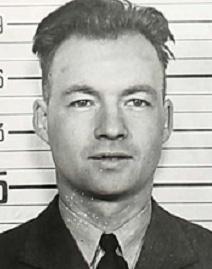
Walter Fitzgerald Sheppard Flying Officer
Royal Canadian Air Force
Kerrobert, Saskatchewan
Died: Dec 17,1943
Commemorated at Cambridge City Cemetery, England
Walter Fitzgerald Sheppard was born December 15, 1914, at Calgary, Alberta. Walter and his family moved to Kerrobert, Saskatchewan about 1915, where Walter completed his junior matriculation at Kerrobert High School in 1932. While a student, Walter joined the 18th Canadian Light Horse as a Trooper (Trumpeter). On July 20, 1940, Walter enlisted at Sherbrooke, Quebec, and served with the Royal Canadian Air Force during the Second World War as a Flying Officer (Air Navigator). On December 17, 1943, Walter Fitzgerald Sheppard died after his Lancaster aircraft crashed near Ely, Cambridgeshire, England, after encountering heavy fog while returning from air operations over Berlin, Germany.
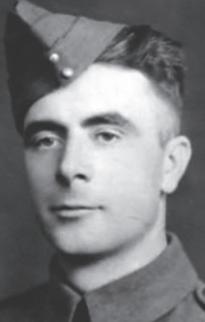
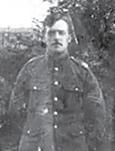



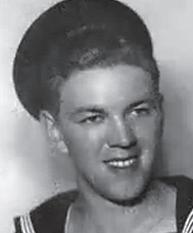
“They

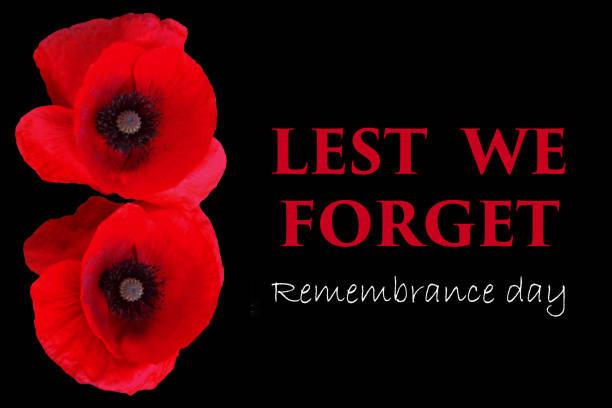
Kerrobert, Saskatchewan
Died: November 1, 1944
Commemorated at Bergen op Zoom Canadian war cemetery, Noord-Brabant, Netherlands
Howard Roy Prescott (b.1921) was KIA 19441101, the day before his 23rd birthday, at Oude Molen and is buried at Bergen op Zoom Canadian war cemetery, Noord-Brabant, Netherlands. His parents Fred Joseph and Ellen Christina (Oberg) Prescott came from Deerwood, Crow Wing Co., Minnesota, in 1917. Howard was born at Kerrobert and farmed with his family before being called up for NRMA training at Regina early in 1943.
RHugo Hilbach Army
Kerrobert, Saskatchewan
Died: April 22, 1945
ifleman (Regina Rifles) Herbert Hubert
Hugo Hilbach (b.1915) of Kerrobert was KIA 19450422 at Groningen during the liberation of the Netherlands and is buried at Holten Canadian war cemetery, Overijssel, Netherlands. Herbert was the son of William and Wilhelmina (Salzwedel) Hilbach, a German couple who came to Saskatchewan via the United States and homesteaded SE36-35-23-W3 north of Kerrobert. Herbert was farming when he enlisted at Regina early in 1942. His younger brother Rudolph also served overseas in the Army.
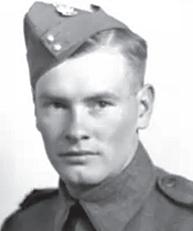
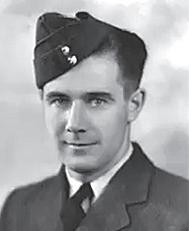
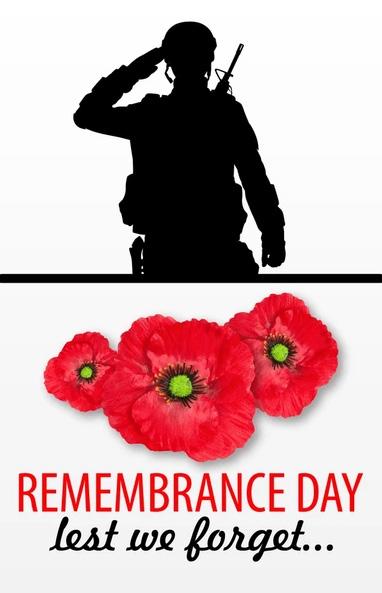
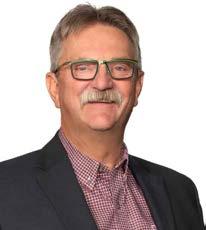
Nov. 11, 2025

Remembering with respect and Honour




Harrie, or “Pop”, as he became affectionately known by most of the male population, worked for several years as a carpenter and painter, also ran a hardware in Marengo for a year, and worked in the collection department for the International Harvester Company and the Massey-Harris Company. Then, in 1935, he became the agent for the United Grain Growers Elevator Co. In Eatonia.

306-463-6969
Hwy 7 & 21
Kindersley, SK

Clarence, or “Classy” Heldson, as he was always known, came from Norwich, Ontario to Kindersley around 1911.He was young and single at the time and stories say that it was his reputation for wearing fancy clothes that had given him the name of “Classy” Heldson.
Classy enlisted in the armed forces in World War I, went overseas with a Canadian battalion, was badly wounded in the shoulder and received disability pension for the rest of his life.

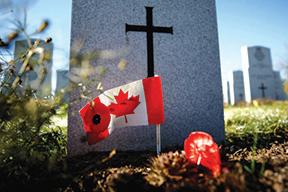

Remembrance Day Nov. 11

“We often take for granted the very things that most deserve our gratitude.” -Cynthia Ozick
KINDERSLEY E VEHICLES
306-463-0291 • hdkexpress.com
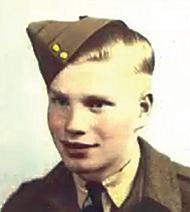
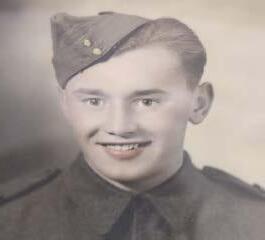
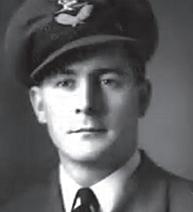



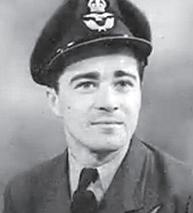
“We shall fight in France, we shall fight on the seas and oceans, we shall fight on the beaches, we shall fight on the landing grounds, We shall never surrender.” - Winston Churchill




























David Arthur Webb
Royal Canadian Air Force Kindersley, Saskatchewan
Died: September 21, 1944
Commemorated at Zeeland Roman Catholic Churchyard, Netherlands
David Arthur Webb, born January 11, 1922 at Kindersley, Saskatchewan, completed his education at Kindersley High School in 1940. Working as a bank clerk with the Kindersley branch of the Canadian Bank of Commerce, Webb enlisted at Saskatoon, Saskatchewan July 25, 1941. Webb served with the Royal Canadian Air Force attached to No. 48 (R.A.F.) Squadron (Forte Et Fidele) as a Pilot Officer (Pilot) during the Second World War. On September 21, 1944, Pilot Officer (Pilot) David Arthur Webb died after being shot down by German fighters near Oosterbeek in the Netherlands. On a re-supply mission during Operation Market Garden, Webb’s Dakota aircraft crashed on the Volkel airfield during the drop. Strafed by Focke-Wulf German fighters during his parachute descent, Webb is commemorated at Uden War Cemetery, Netherlands. Son of John Arthur and Sara Edith (nee Banter) Webb of Fairmount, Saskatchewan; brother of Marjorie Anne and John Baxter (died in 1937); he was 22 years old. Citation(s): 1939-45 Star, France-Germany Star, Defence Medal, War Medal, Canadian Volunteer Service Medal.





Sapper Edgar Norman Shea Army
Kindersley, Saskatchewan
Died: August 26, 1944
Commemorated at Bretteville Su-Laize - Canadian War Cemetery, Calvados, France
Edgar Norman Shea, born September 7, 1921 at Drake, Saskatchewan, completed his education at Springwater, Saskatchewan in 1938. Working as a farm labourer for George Robins at Springwater, Shea enlisted at Saskatoon, Saskatchewan June 1, 1942. Shea served with the Royal Canadian Engineers attached to the 1 Mechanical Equipment Company as a Sapper during the Second World War. In support of General Headquarters and Line of Communication (LoC) Troops, the unit landed in France July 12, 1944 with the 1st Canadian Infantry Division. The 1 Mechanical Equipment Company began construction and repairs on the track at the airfield at Carpiquet near Calvados held by German SS Panzer forces. On August 26, 1944, Sapper Edgar Norman Shea died following the liberation of Calvados and is commemorated at Bretteville-sur-Laize Canadian War Cemetery, Calvados, France. Son of Herbert Britain and Ethel Hanna Shea (formerly of Springwater) of Cordova Bay near Victoria, British Columbia; brother of Garnet, Charles, Erwin, Gordon, Ronald, Violet, Luella, Pearl, Lillian and Beatrice; he was 23 years old. Citation(s): 1939-1945 Star, France-Germany Star, Defence Medal, War Medal, Canadian Volunteer Service Medal with Clasp.





Pilot Officer Victor Charles Arnold
Royal Canadian Air Force Kindersley, Saskatchewan
Died: May 5, 1941
Commemorated at Grangemouth (Grandsable) Cemetery, United Kingdom
Victor Charles Arnold, born February 20, 1921 at Kindersley, Saskatchewan, moved to Saskatoon, Saskatchewan where he served with the Saskatoon Light Infantry (MG) as a Private until he enlisted with the RCAF on July 17, 1940. Arnold served as a Pilot Officer with the Royal Canadian Air Force (Sic Itur Ad Astra) attached to No. 58 Operational Training Unit during the Second World War. Based at RAF Grangemouth, Scotland, the No. 58 OTU trained day fighter pilots. On May 5, 1941, Pilot Officer Victor Charles Arnold died following the crash of his Miles Master aircraft during a training exercise, his aircraft going down near Falkirk, Stirlingshire, Scotland. Arnold is commemorated at Grangemouth (Grandsable) Cemetery, Stirlingshire, Scotland. Son of Colonel Harry Watson Arnold and Eva Mary (nee Martin) Arnold of Saskatoon; brother of Flight-Lieutenant Keith Fergus Arnold (DFC) who died July 25, 1941 on Mull of Kintyre, Doris Eva Arnold, Freda Mary Arnold and Joan Elain Arnold; he was 20 years old. Arnold Lake, north of Goodsoil, Saskatchewan is named for both sons.



Kindersley, Saskatchewan Died: November 10, 1917 Commemorated at Poelcapelle Britich Cemetery, Belgium
Wilfrid Ernest Fakeley was born February 28, 1894 at Dover, Kent, England and immigrated to Canada with his family in September 1907, homesteading near Kindersley, Saskatchewan. Single and living at Kindersley, he worked as a drug clerk before enlisting at Kindersley April 7, 1916. Overseas with the 203rd Battalion in October 1916, Fakeley served as a Private with the Canadian Expeditionary Force attached to the 8th Battalion (90th Winnipeg Rifles) during the First World War. Landing in France in April 1917 with the 2nd Infantry Brigade, 1st Canadian Division, the 8th Battalion fought along the Western Front in France and Belgium. On November 10, 1917, Private Wilfrid Ernest Fakeley died following an enemy shell explosion during an advance through the Cressy Farm near Passchendaele, Belgium. He is commemorated at the Poelcapelle British Cemetery, Belgium, on the Dover War Memorial, Kent, England and on the Manitoba Historical Society War Memorial, Manitoba. Son of John James and Catherine Louise (nee Hewlett) Fakeley of Kindersley (formerly of Dover); brother of Lillian, Herbert, Stephen, Catherine, Amy and John Fakeley; he was 23 years old.
“The ultimate measure of a man is not where he stands in moments of comfort and convenience, but where he stands at times of challenge and controversy.” – Martin Luther King Jr.




































London - October 5 -The Ministry of Information today said it had reason to believe that half of the German submarines operating at sea at the outbreak of the war have been destroyed. No figures were given.
October 6 - Fuehrer Hitler today listed the losses of Germany’s armed forces in the Polish campaign as 10,572 killed, 30,322 wounded and 3,404 missing.
A “laying down of arms” in Europe through a broad conference designed to bring about disarmament and new economic treaties was proposed by Adolf Hitler in a speech to the Reichstag.
Premier Daladier tonight declared France and Great Britain will not lay down their arms until a peace which excludes all possibility of hegemony in Europe by one State or group of States is “effectively ensured”.
October 7 - France settled herself for a long war, her announced determination to “carry on to victory”, apparently unshaken by Adolf Hitler’s ‘last’ offer to end hostilities.
Major-General A.G.L. McNaughton, president of the National Research Council and former chief of the general staff, will command the first Canadian division of the Canadian Active Service Force.
October 9 - The Governments of Britain, Australia, New Zealand and Canada have agreed to set up preliminary training schools in their own countries. Graduates of these schools will be sent to Canada for advance technical training. It was thought likely the number would exceed 25,000 annually The Royal Navy repulsed repeated attacks by German bombing planes in the North Sea, without damage to any British ships.
October 10 -The Daily Sketch reported that Grand Admiral Erich Raeder, commander-in-chief of the German navy, tried unsuccessfully to resign his post as a result of Foreign Minister von Ribbentrop’s “Baltic blunder”. The newspaper said that Raeder protested that von Ribbentrop’s action, enabling Russia to grasp all strategic points and islands in the eastern Baltic, hammed in the German navy in the East while the British fleet bottled it up in the West.
French troops were reported to have turned back numerous German assaults south of the strategic city of Saarbruecken with hand grenades and rifle fire.
October 11 - Winston Churchill, first lord of the Admiralty, today declared the balance was now in Britain’s favor in the war on merchant shipping. “From September 24 to October 9 we have lost by U-boat action 5,890 tons and we have taken from the enemy 13,615 tons, leaving a balance in our favor of 7,725 tons.”
October 12 - German patrols battered French outposts from the Moselle to the Rhine today, continuing a series of thrusts reported to have cost the Nazis ‘’hundreds” of casualties.
The Royal Navy was reported to have captured the 13,615-ton German steamship Cap Norte.
October 13 - British diplomatic circles received calmly reports from Berlin that Adolp Hilter had decided to throw Germany’s full strength into the war against Britain and France.
The Admiralty announces that Friday, the 13th of October, has proved an unlucky day for the U-boats, three having been destroyed, two of which were the large ocean going type.
October 14 - The Admiralty announced the sinking of the British battleship by a German submarine. The 29,150 ton battleship was built in 1914.
- Kindersley Clarion - October 1939

